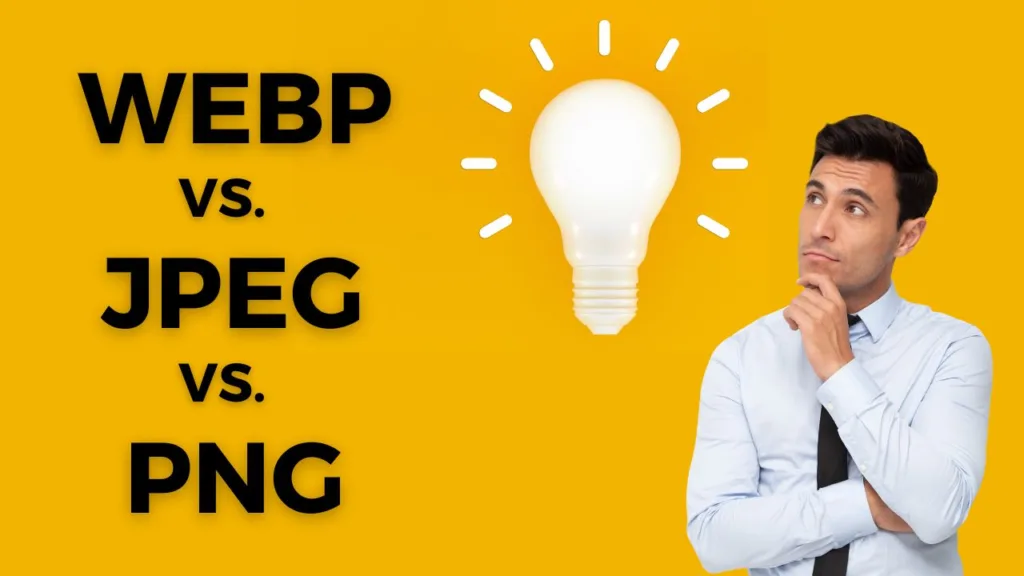Images have become a universal element of digital content. It is crucial to choose right image format regardless of how you are designing your website, sharing photos on social media or working in graphic design. Among a wide range of options three image formats stand out as modern giants: JPEG, WebP and PNG. Each of them have a set of unique characteristics, advantages and uses which are important for the purpose of being able to make sound decisions.
Understanding WebP
WebP is on the block in a rather new way. It was developed by Google which offers impressive compression capabilities that make it an excellent choice for the web. For their low file sizes and high resolution images, WebP files are known. This format is particularly suited for web developers and designers who wish to optimize page loading times and make the user experience more pleasant.
The Power of JPEG
One of known and widely used picture formats is JPEG or Joint Photographic Experts Group. JPEG is one of the most widely used formats for photographs and graphics on the Web due to its compatibility with image quality, ability to retain good picture quality despite a reduction in file size. It is balancing the quality of a file with its size.
Versatility of PNG
Thanks to its transparent support, PNG or portable network graphics has been named as one of the best. For the purposes of pictures that require a clean or partially transparent background, it is widely used. The PNG format is lossless, which means it does not affect the image quality. When it comes to graphics and images this format is the most preferred choice due to its importance in ensuring that all details are preserved.
Image Quality Comparison
Quality of the images is one of the major considerations when choosing a different image format. WebP is an excellent choice to display images on the Internet because of its impressive quality at smaller file sizes. JPEG may introduce some compression artifacts in photographs, but it remains an excellent choice for image processing. In a situation where transparency is needed PNG excelled in its ability to retain the image quality with no loss of compression.
Compression and File Size
Compression techniques used by these formats are of important importance in the determination of file size. The most efficient way to use the Web is by using WebP’s modern compression techniques. JPEG is effective at balancing the quality and size of the files. Although PNG is lossless, because of its uncompressed nature it tends to produce larger files.
Browser and Platform Support
It is crucial to understand browser and platform support. The popularity of WebP has been growing, especially in modern web browsers. JPEG files are supported across the board. PNG is often used for images that need transparency, although it also has widespread support. For web developers and designers who seek to reach the widest possible audience, such knowledge is of paramount importance.
Transparency and Alpha Channel
PNG is the undisputed champion when it comes to transparency and alpha channels. It’s ideal for logos, icons and images with complicated transparency requirements because of its ability to support blurred backgrounds and alpha channels. The Web Protocol is making progress on this issue, but the JPEG does not support transparency.
Choosing the Right Format
Your specific use case will determine how to select the right image format. For decisions to be made with due consideration, use the following guidelines:
- WebP: For web images which have smaller file sizes and higher quality, WebP is required.
- JPEG: Where there is a need to balance the quality and file size of JPEGs for photos or general web images it is important.
- PNG: It is important to use PNG in the images which must be transparent or when preserving all details.
If necessary make sure you have tools (Like JFIF to JPG Converter) to convert your image into a format that can be adapted for different use cases.
The Future of Image Formats
There is always an evolution in the landscape of image formats. Developments in the current formats are continuing to improve, according to emerging trends. We will see even more effective compression techniques, better transparency support and enhanced compatibility across platforms and browsers in the future.
Conclusion
WebP, JPEG and PNG each have their strengths at stake when it comes to the battle of modern image formats. In order to ensure that your images have a visual appeal and align with the audiences you intend to serve, understanding their different features and best use scenarios is essential. It is crucial for digital content creators, website developers and designers to make educated decisions about choosing the right image format so that they can succeed in a constantly changing digital world.



